|
Riardo, Italy |
| |
August 8 |
|
| |
|
|
|
Riardo is the town where the DeNuccio family got its start many centuries
ago. Until now, few American DeNuccio's had visited there.
Unfortunately for us, no DeNuccio's live there anymore. We're pretty
sure they made a good decision to leave. Very beautiful place, yet
not the best place in Italy. |
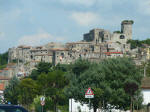 |
 |
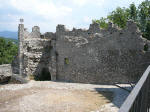 |
|
Old Riardo |
The main tower of the castle |
One of the views |
|
Although there are some inhabitants of the area we called Old Riardo, most
people seemed to live in the lower areas. There was one restaurant
in the upper areas and a few in the lower ones. The city was however
making improvements to the older area and redoing some of the sidewalks
and walkways. |
 |
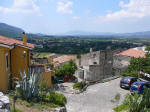 |
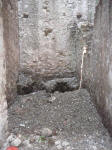 |
|
A broader view of the previous |
Some of the inhabited areas |
This is a very large pile of pigeon poop. If
only it were as valuable as Bat Guano is to some tribes |
| |
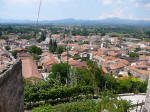 |
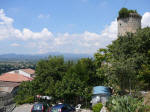 |
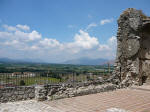 |
|
New Riardo |
The Tower from New Riardo |
View from the Restaurant's Deck |
|
From what our family has been told, the name DeNuccio comes from a
Spaniard who was fighting in what is now Italy during one of the many turf
battles of the time. According to the history we know, a man named
Peter (Pedro/Pietro) who was from an area of Spain called Nucho was placed
in charge of this area of modern day Italy and he formed a family, who
eventually became known as DeNuccio (Peter from Nucho = Pedro de Nucho =
Pietro De Nuccio). In the current church in Old Riardo, we saw three
name plates and etchings with the name De Nuccio, signifying that we were
in the right place. There is supposedly a street named DeNuccio, but
we couldn't find it, nor did we look in New Riardo for this street.
If you noticed the different spellings in this text of DeNuccio (De
Nuccio), the one with the space is the traditional way. The one
without the space is how many in the family spell the name now. |
 |
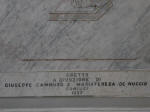 |
 |
|
Pew name plate |
Etching in large marble piece in church |
Second of third Pew Name plate
(Mike didn't take photo of the 3rd) |
| |
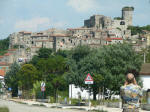 |
|
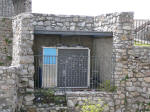 |
|
Dad takes a final shot of Riardo |
|
Despite looking old, the original inhabitants did
have central heat and air conditioning way back in the 13th and 14th
centuries. |
| |